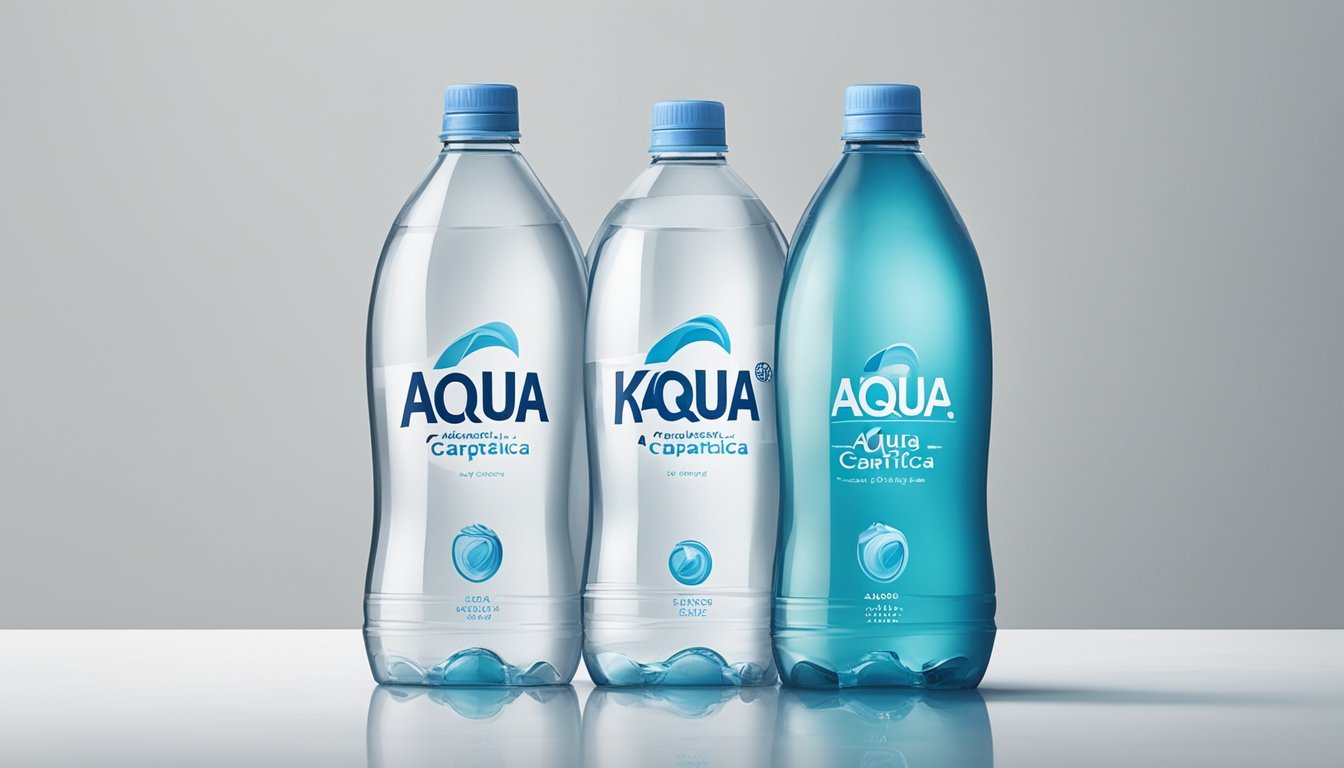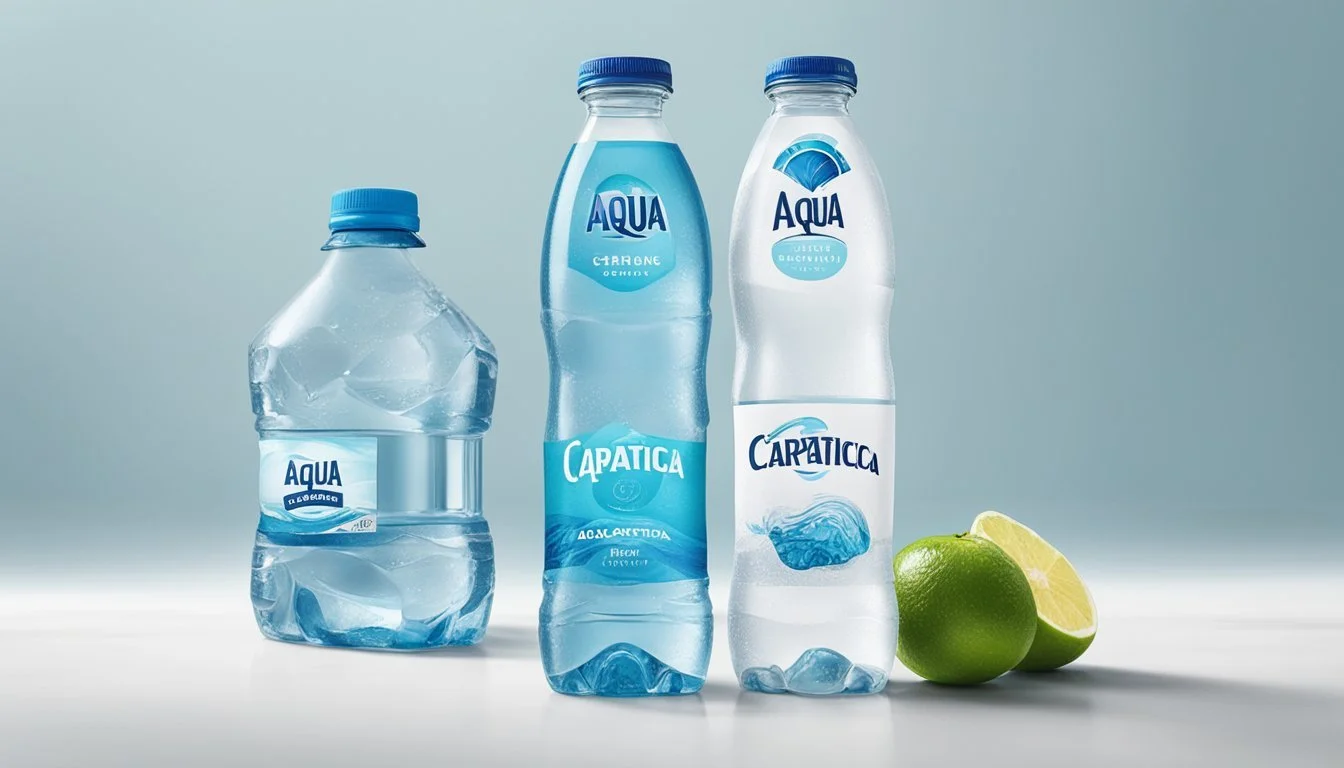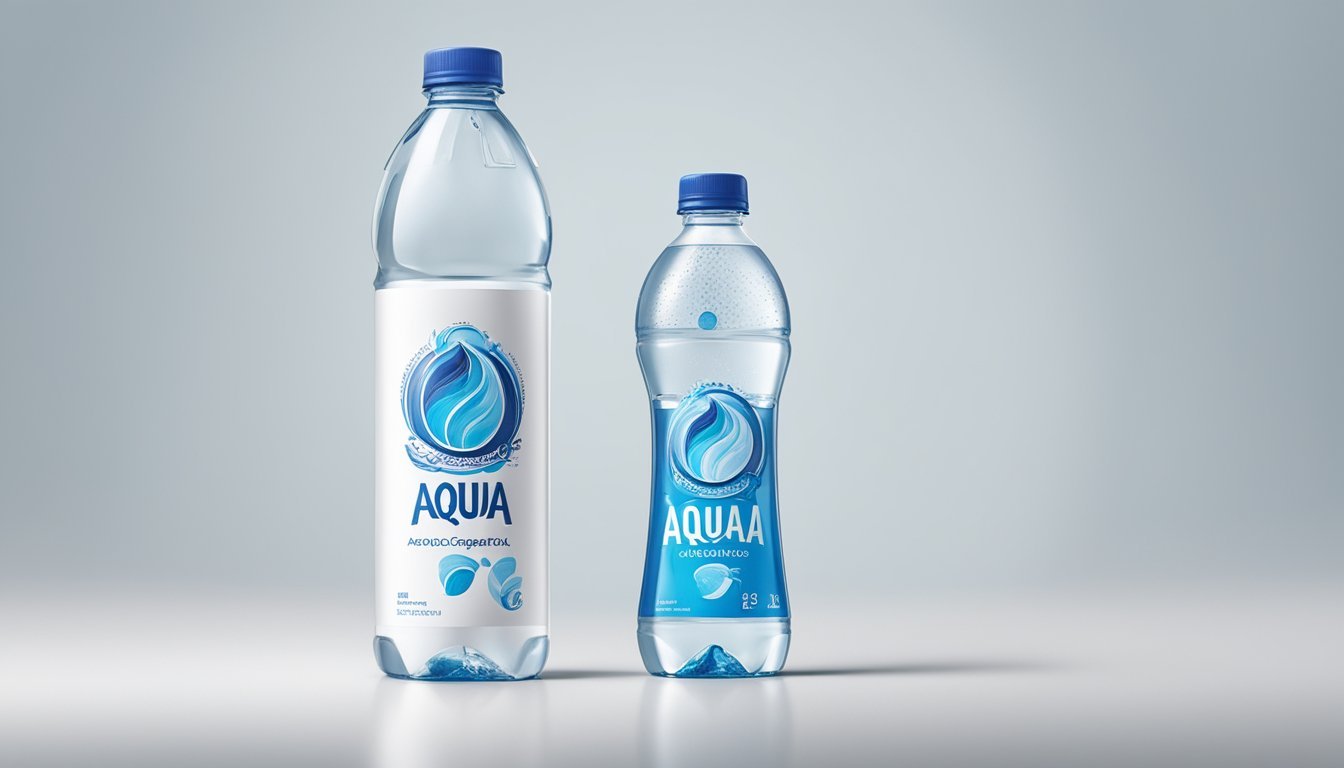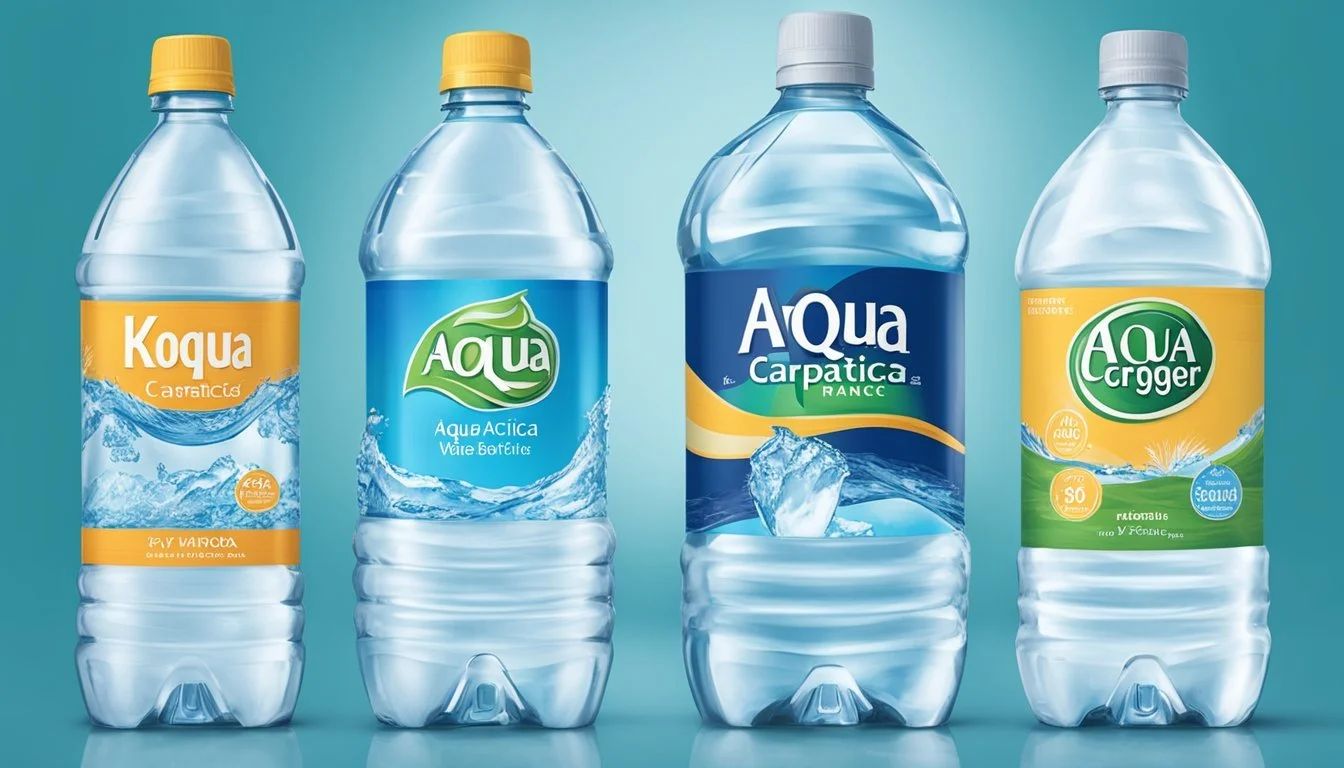Aqua Carpatica vs. Kroger
Bottled Water Showdown
In a world where bottled water choices abound, consumers often find themselves debating between well-known brands like Aqua Carpatica and Kroger. Both offer distinct features and benefits, but which one truly stands out? Aqua Carpatica is lauded for its nitrate-free purity and reasonable pricing, making it a favorite among health-conscious individuals. Its availability in both still and naturally sparkling options further adds to its appeal.
Kroger bottled water, on the other hand, adheres to FDA regulations and meets safety and quality standards. However, concerns about contaminants such as microplastics and BPA, despite many bottles being BPA-free, persist among consumers. The environmental impacts associated with plastic bottles also raise questions about the broader implications of choosing Kroger over other brands.
Ultimately, the decision between Aqua Carpatica and Kroger hinges on individual priorities. While Aqua Carpatica offers purity and health benefits at a competitive price, Kroger provides a reliable and familiar option with noted environmental considerations.
Understanding Bottled Water
Bottled water has become a staple in many households around the world. Here's an exploration of its background, variety, market status, and regulatory environment.
History and Significance
Bottled water has a long history, dating back to ancient civilizations where it was sourced from mineral springs believed to offer health benefits. Its commercial history began in the 18th century, with spa towns popularizing it. The demand surged in the 20th century due to safety concerns with tap water. Consumption has soared globally, driven by perceptions of purity and convenience.
Types of Bottled Water
Bottled water comes in various forms, including:
Spring Water: Sourced from underground formations, naturally filtered.
Mineral Water: Contains minerals from its source.
Purified Water: Tap or groundwater that has been purified.
Sparkling Water: Naturally carbonated or artificially carbonated.
Artesian Water: From a well tapping a confined aquifer.
Each type has distinct characteristics, sources, and treatment processes, catering to different consumer preferences and requirements.
Current Market Overview
The bottled water market has grown tremendously. Brands like Aqua Carpatica and Kroger have carved niches. Aqua Carpatica boasts a nitrate-free, low-sodium profile, appealing to health-conscious consumers. Kroger offers a cost-effective option, adhering to safety standards though concerns about microplastics remain. The market includes premium, niche brands focusing on unique selling points like mineral content or eco-friendly packaging.
Bottled Water Regulations
The FDA oversees bottled water safety in the U.S., ensuring compliance with stringent standards. Regulations cover source protection, processing, and bottling. Bottled water must meet federal and state legal limits for contaminants. Labels must accurately reflect content and source. The International Bottled Water Association also plays a role in setting industry standards, promoting quality and safety.
These key aspects help consumers make informed choices about bottled water options, aligning with personal health and environmental considerations.
Profile of Aqua Carpatica
Aqua Carpatica is known for its high quality and natural properties, sourced from pristine environments and packaged with sustainability in mind. It aims to offer a pure hydration experience to consumers around the world.
Origin and Source
Aqua Carpatica originates from the Carpathian Mountains in Romania, a region known for its natural springs. The water is drawn from deep within these mountains, ensuring a pure and unpolluted source. The Carpathian Mountains' untouched environment contributes to the water's unique composition and high quality.
Water Quality and Benefits
Aqua Carpatica is nitrate-free and low in sodium, making it a healthy choice for consumers.
It is rich in essential minerals such as calcium and magnesium, which can benefit bone and heart health. The water's balanced mineral content and clean taste set it apart from many other bottled waters on the market.
Packaging and Sustainability
Aqua Carpatica emphasizes environmentally friendly practices. The water is bottled in 100% recycled and BPA-free containers, reducing the environmental impact.
The brand aims to promote sustainability by offering packaging options that are both recyclable and practical for everyday use. Their commitment to reducing plastic waste aligns with wider environmental goals.
Global Availability
Aqua Carpatica has expanded its market reach significantly. It is available in major retailers such as Amazon, Whole Foods, and even local grocery stores like Tesco in the UK. The brand's presence in diverse markets helps it cater to a broad audience, providing convenient access to high-quality natural spring water worldwide.
Profile of Kroger's Bottled Water
Kroger's bottled water is known for both its affordability and adherence to FDA safety standards. Despite its popularity, consumers remain concerned about potential contaminants and the environmental impact of plastic bottles.
Water Source and Filtration
Kroger sources its water from various municipal supplies before subjecting it to multiple filtration processes, including reverse osmosis. This method ensures the removal of impurities and contaminants, producing water that meets high safety standards. Quality reports indicate that Kroger's water is regularly tested to maintain compliance with FDA regulations, ensuring it is safe for consumption.
Quality and Price Comparison
In terms of quality, Kroger's bottled water is comparable to other major brands like Dasani or Aquafina. It adheres to stringent purification processes, ensuring the water is free from harmful substances. Quality reports reveal that Kroger performs thorough testing, which includes checks for contaminants like microplastics.
Price-wise, Kroger is a budget-friendly option available in many grocery stores. It offers good value without compromising on quality, making it a preferred choice for many consumers looking for affordable bottled water options.
Packaging and Environmental Impact
Kroger uses plastic bottles for its water, with a significant focus on using recyclable materials. Despite this effort, the environmental impact of plastic packaging remains a concern. Microplastics are frequently detected in bottled water, and Kroger is no exception.
Additionally, the environmental ramifications of plastic pollution and waste continue to be a significant issue. Kroger's initiative to produce BPA-free bottles is a step toward reducing harmful environmental effects, although challenges persist with overall plastic use.
Comparing Taste Profiles
When evaluating Aqua Carpatica and Kroger bottled waters, taste is a critical factor. The following sections will detail the taste test methodology and consumer preferences.
Taste Test Methodology
The taste test involved a blind trial to eliminate brand bias. Participants were given samples of both Aqua Carpatica and Kroger bottled water. Each sample was served at room temperature to ensure consistency.
Criteria for evaluation included:
Initial taste: The first impression when the water touches the palate.
Clean taste: The purity and clarity of the water.
Aftertaste: Any lingering flavors following swallowing.
Aqua Carpatica was noted for its natural, nitrate-free composition. This affects its clean taste profile, which tends to be crisp and refreshing. In contrast, Kroger water, while generally considered clean, sometimes exhibited a slight aftertaste, possibly due to its source and processing methods.
Consumer Preferences
Consumer feedback revealed distinct preferences between the two brands. Aqua Carpatica was favored for its pure, clean taste, associated with its low sodium and nitrate-free nature. Many participants described it as having a refreshing and satisfying aftertaste.
Kroger water, although widely appreciated for its availability and price, received mixed reviews on taste. Some users noted a slight aftertaste that detracted from the overall drinking experience. This did not deter those seeking an economical option but did influence taste-sensitive consumers.
In summary, taste tests and consumer preferences highlight Aqua Carpatica’s superior clean and refreshing taste, while Kroger offers a reliable, budget-friendly alternative.
Health and Hydration
When comparing Aqua Carpatica and Kroger bottled water, several factors such as hydration benefits, mineral content, and pH levels are crucial.
Hydration Benefits
Hydration is essential for maintaining bodily functions. Both Aqua Carpatica and Kroger bottled water provide effective hydration. Aqua Carpatica, sourced from the Carpathian Mountains, prides itself on being naturally pure and free from nitrate contamination. This purity may appeal to those concerned with natural hydration solutions.
Kroger's bottled water, regulated by FDA standards, offers reliable hydration albeit with some concerns due to the potential presence of microplastics. Despite these concerns, many bottles are now BPA-free, enhancing their safety. Both brands meet basic hydration needs, but Aqua Carpatica’s source purity may give it an edge for health-conscious individuals.
Minerals and Electrolytes
Minerals and electrolytes are vital for various physiological processes. Aqua Carpatica contains a moderate level of minerals such as calcium and magnesium. Specifically, it boasts natural electrolytes which can aid in replenishing the body's mineral reserves, contributing to better muscle function and general wellness.
Kroger bottled water also adheres to FDA regulations regarding mineral content; however, it may not feature the same naturally occurring minerals found in Aqua Carpatica. Some consumers might favor Aqua Carpatica for its natural mineral content which includes calcium and magnesium, known to support bone health and muscle function, respectively.
pH Level and Alkalinity
The pH level of water can influence its alkaline properties, potentially impacting health. Aqua Carpatica is known for its high pH level, around 7.8 to 8.2, making it slightly alkaline. This alkalinity might appeal to those who believe alkaline water can help neutralize acid in the bloodstream and improve hydration efficiency.
Kroger bottled water, on the other hand, typically has a neutral pH level around 7. While this is adequate for hydration, it may not offer the same purported benefits associated with alkaline water. Consequently, individuals looking for alkaline benefits might prefer Aqua Carpatica due to its higher pH level and potential health advantages.
Safety and Contaminants
Both Aqua Carpatica and Kroger bottled water are subject to various safety standards and have potential contaminants that consumers should be aware of. It is essential to understand these aspects for making an informed choice.
Identifying Contaminants
Aqua Carpatica prides itself on being free from many contaminants. Regular tests ensure low levels of harmful substances like heavy metals and arsenic.
Kroger bottled water also adheres to safety protocols, though concerns have been raised about contaminants such as microplastics and BPA. Both types of water are monitored for PFAS chemicals, which can be a health concern at elevated levels. Therefore, it’s crucial to check the water quality reports provided by the brands to understand what might be present.
Legal Standards and Compliance
The FDA sets stringent guidelines to maintain the safety of bottled water. Aqua Carpatica and Kroger must comply with these standards to ensure consumer safety.
Aqua Carpatica often emphasizes meeting these guidelines and sometimes exceeding them, ensuring minimal presence of harmful substances. Kroger also complies with FDA regulations, although there have been instances where concerns about certain contaminants like microplastics have been noted.
Consumer awareness is key, and looking at how each brand adheres to FDA legal limits on contaminants like lead and arsenic is essential for making an informed choice.
Environmental Considerations
Environmental sustainability is a critical aspect when comparing Aqua Carpatica and Kroger bottled water. One must consider the impacts of bottle production and the sustainability of their water sources.
Bottle Production Impact
Aqua Carpatica utilizes glass bottles for many of its products, making it more environmentally friendly compared to plastic. Glass is not only recyclable but can be reused multiple times without degrading its quality. This, in turn, reduces the carbon footprint.
Kroger, on the other hand, primarily uses plastic bottles. While many Kroger bottles are BPA-free and recyclable, the production of plastic is more carbon-intensive. Moreover, plastic's impact on pollution and waste is significant, contributing to environmental degradation.
Water Source Sustainability
Aqua Carpatica sources its water from natural springs in the Carpathian Mountains, which are known for their rich, unpolluted environment. These springs provide a sustainable and renewable source of water, making Aqua Carpatica's approach more environmentally conscious.
Kroger sources its water from various locations, but specific sources are often less transparent. This lack of transparency can raise concerns about the sustainability and environmental practices at these sites. Sustainable practices and minimal environmental impact should be core objectives for water bottlers, requiring detailed information for consumer trust.
Purchasing and Accessibility
Aqua Carpatica and Kroger bottled water offer varied options for purchase, including both physical stores and online platforms. Accessibility and choice of distribution can play a key role in determining the better option for consumers.
Availability in Stores
Aqua Carpatica can be found in several high-end grocery stores. Notably, it is available at Whole Foods, which is known for stocking premium products. The brand is often positioned in sections dedicated to natural or specialty waters, making it easily identifiable.
Kroger bottled water enjoys widespread availability given that it is a house brand. Consumers can easily find it in any Kroger grocery store across the U.S. This includes a variety of store formats under the Kroger banner, making it a convenient option for many customers.
Online Retailers and Delivery Options
Aqua Carpatica is sold through multiple online platforms including Amazon and Ocado. These retailers offer various delivery options, catering to different customer needs. On Amazon, it benefits from customer reviews and swift delivery services, while Ocado ensures that it reaches a wide audience in the UK.
Kroger bottled water can be ordered through Kroger's own website, which provides options for home delivery and store pickup. Additionally, it may be stocked by other online retail partners. However, it does not have as extensive a presence on global e-commerce platforms like Amazon, potentially limiting its accessibility to a broader audience.
Consumer Education
Consumers need to be well-informed about the quality and safety of bottled water brands like Aqua Carpatica and Kroger. This involves understanding how to read quality reports and deciphering labels and marketing strategies.
Reading Quality Reports
Quality reports provide essential information about the safety and pathogen levels of bottled water. Both Aqua Carpatica and Kroger provide these reports, which often include details such as mineral content, pH levels, and the presence of any contaminants.
Consumers should look for compliance with FDA regulations. Companies typically publish these reports in PDF format on their websites or make them available upon request. These reports can help consumers make informed decisions about the water they consume, ensuring the products meet safety standards.
Understanding Labels and Marketing
Bottled water labels and marketing can sometimes be misleading. It's important for consumers to understand terms like "purified," "spring water," and "artesian." Aqua Carpatica often highlights its natural mineral content and BPA-free bottles, while Kroger emphasizes FDA compliance and affordability.
Reading the fine print on labels helps consumers identify the source and composition of the water. Certifications from bodies like the International Bottled Water Association can also be a marker of quality. Understanding these aspects helps consumers choose bottled water that aligns with their health needs and quality expectations.







